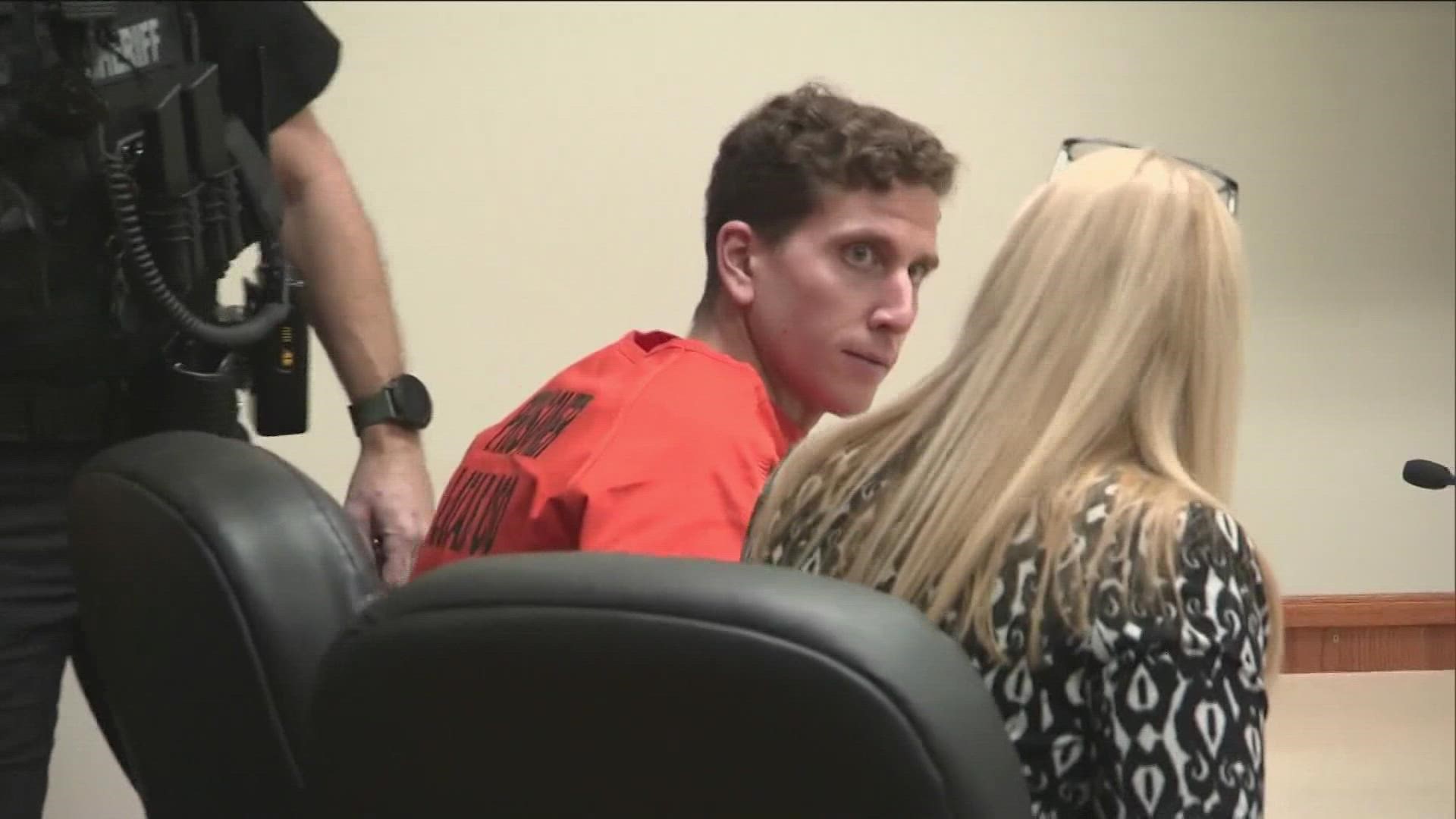SEATTLE — Court documents detailing how police connected suspect Bryan Kohberger to the murders of four University of Idaho students were unsealed Thursday.
Kohberger faces four counts of first-degree murder and burglary after Madison Mogen, Kaylee Goncalves, Xana Kernodle and Ethan Chapin were found stabbed to death Nov. 13.
An affidavit shows police recovered a knife sheaf from one of the victim’s bedrooms that had a DNA sample on it.
DNA evidence obtained from the knife sheath at the scene and from Kohberger's parents' house was tested at the Idaho State Lab, court documents say. The results showed the DNA from the parent's house was almost certainly from the father of the person whose DNA was on the knife sheath.
Investigators say cellphone data indicates Kohberger turned off his cellphone during the killings. Before data cut out at 2:47 a.m., it showed Kohberger left from his apartment and traveled south through Pullman. When Kohberger’s phone reports back to the network at 4:48 a.m., the phone was near Blaine, Idaho, which is south of Moscow. Data shows Kohberger then returns to his Pullman apartment.
Read the full unsealed affidavit, which explains the basis for Kohberger's arrest, below.
Read the criminal complaint, which explains the charges filed against Kohberger, below.
Kohberger had his first appearance hearing in Idaho on Thursday after he was arrested and extradited from Pennsylvania. Kohberger's court-appointed attorney requested bail, which was denied by Idaho Magistrate Judge Megan E. Marshall.
The next step in the process is a preliminary hearing, where prosecutors present evidence and witnesses in open court and the judge rules on whether to bind Kohberger over for trial, meaning the case is sent to district court. Sometimes defendants can waive the preliminary hearing.
Alternatively, Kohberger could go through the grand jury process, which is a mechanism to bring a serious criminal matter to district court and would replace the preliminary hearing. This process could lead to an indictment.
After bail and preliminary hearings, Kohberger would then have an arraignment hearing. That is when he will enter a plea of guilty or not guilty. After that, if the prosecutors and defendants wish, they can engage in plea negotiations.
Otherwise, both sides will prepare to go to trial.

